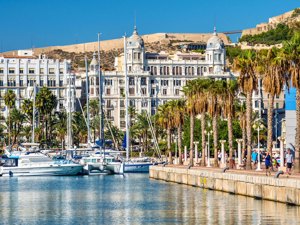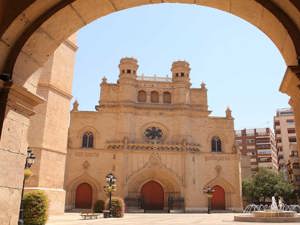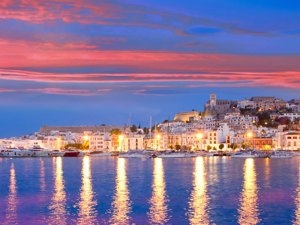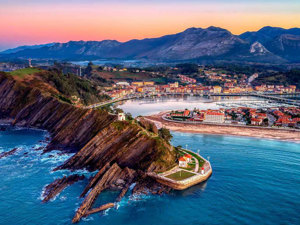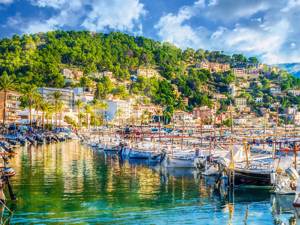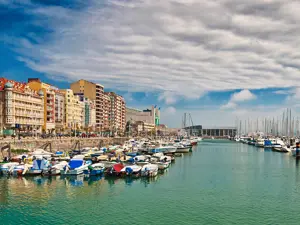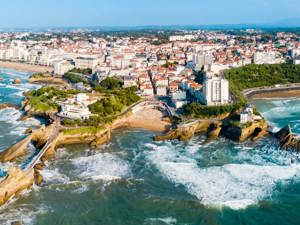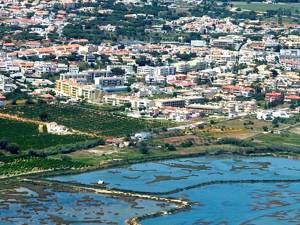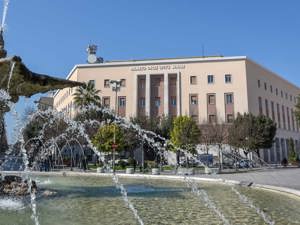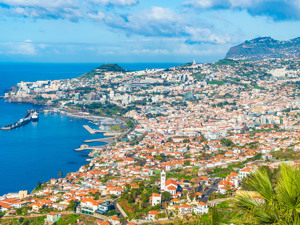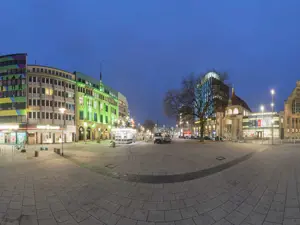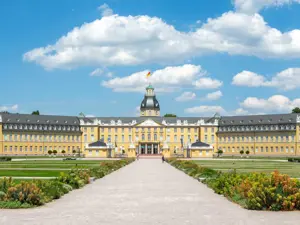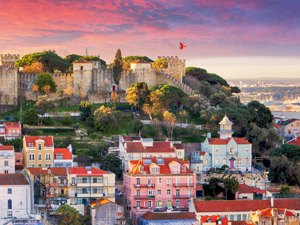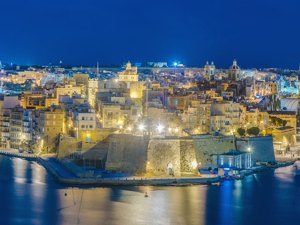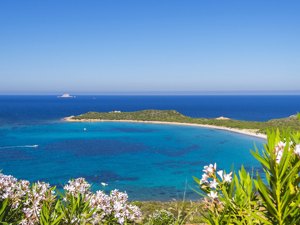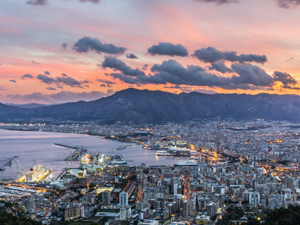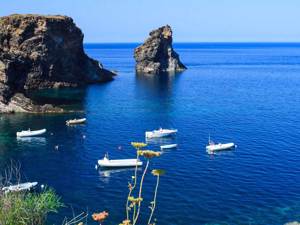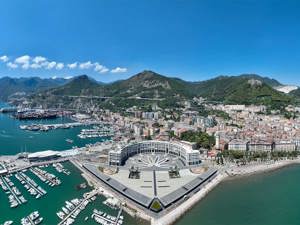The Jewel of Aragon with two thousand years of history
Zaragoza, welcoming and modern in a setting of extraordinary monumental and artistic beauty, is the city in which an overlapping of cultures can be seen more than in any other place in Spain. The historic capital of Aragon and the Ebro Valley, the great river that runs through it, Zaragoza still conserves traces of two thousand years of history including the octagonal structure of the town desired by its founder, the Roman emperor Caesar Augustus, and the various examples of Muslim, Romanesque, Gothic, Mudéjar, Renaissance, Baroque, Neoclassic and Modernist art.
Aljaferia Place
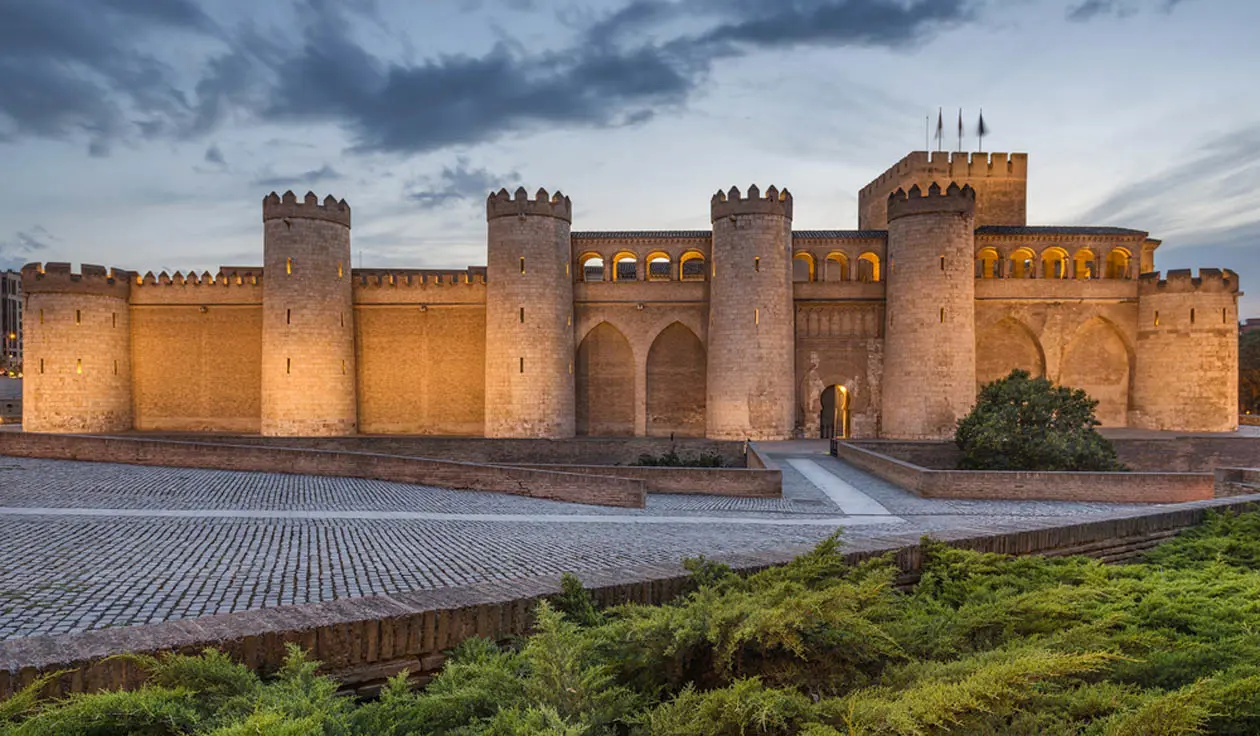
Aljaferia Place Photo Copyright © Sisterscom.com / Shutterstock
Symbol of the Arab architectural imprint is the Aljaferia Place, erected in the last period of Muslim domination (XI century). Brightly restored, current home of the Cortes (parliament) of Aragon, this splendid monument is a group of buildings that overlapped over time.
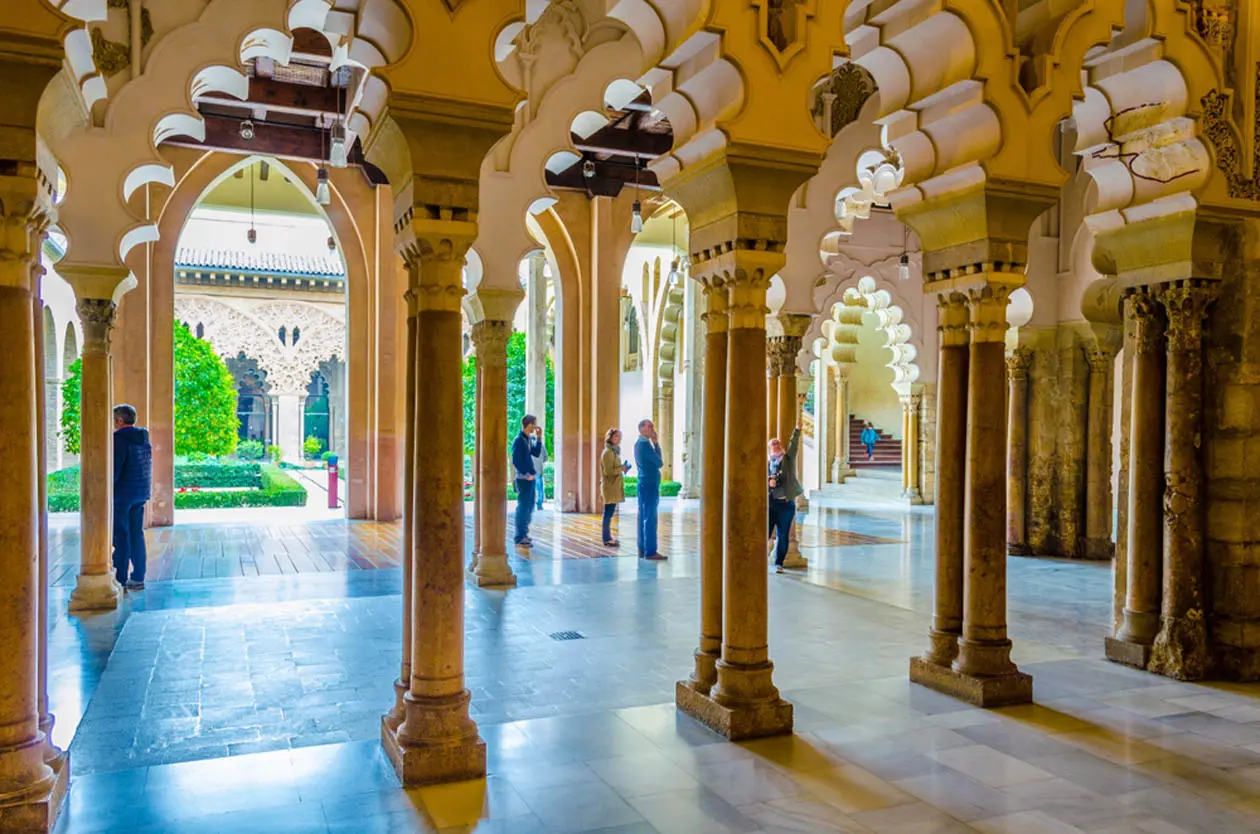
Aljaferia Place Photo Copyright © Sisterscom.com / Shutterstock
The oldest part contains the great Troubadour tower, which inspired the famous opera by Giuseppe Verdi of the same name (Il Trovatore), Moresque courtyards and porticos, and a small mosque. The Medieval Christian Palace that was once home of Aragon monarchs houses the Patio de Santa Isabella and Mudéjar style rooms, studded with inlay work on wood. The symbol of the Catholic kings is the Throne Room, dominated by its multi-coloured coffered ceiling in golden wood.

The Catedral de la Seo Copyright © Sisterscom.com / Shutterstock
The Catedral de la Seo
The Catedral de la Seo is a genuine Gothic masterpiece, with its beautiful Mudéjar decoration in bricks and tiles on the external façades.
La Seo, where the kings of Aragon were crowned, has five naves that combine all the artistic trends of Aragon, and 16 lateral chapels in which the Baroque style and alabaster dominate.
A visit to the cathedral, dedicated to the Saviour and illuminated with natural light that filters through the round windows, culminates with the sight of the High Altar-piece in multi-coloured alabaster, which commemorates the Adoration of the Magi, the Transfiguration and Ascension of Christ, together with the history and martyrdom of Saints Lorenzo, Valero and Vincente.
The Basilica del Pilar
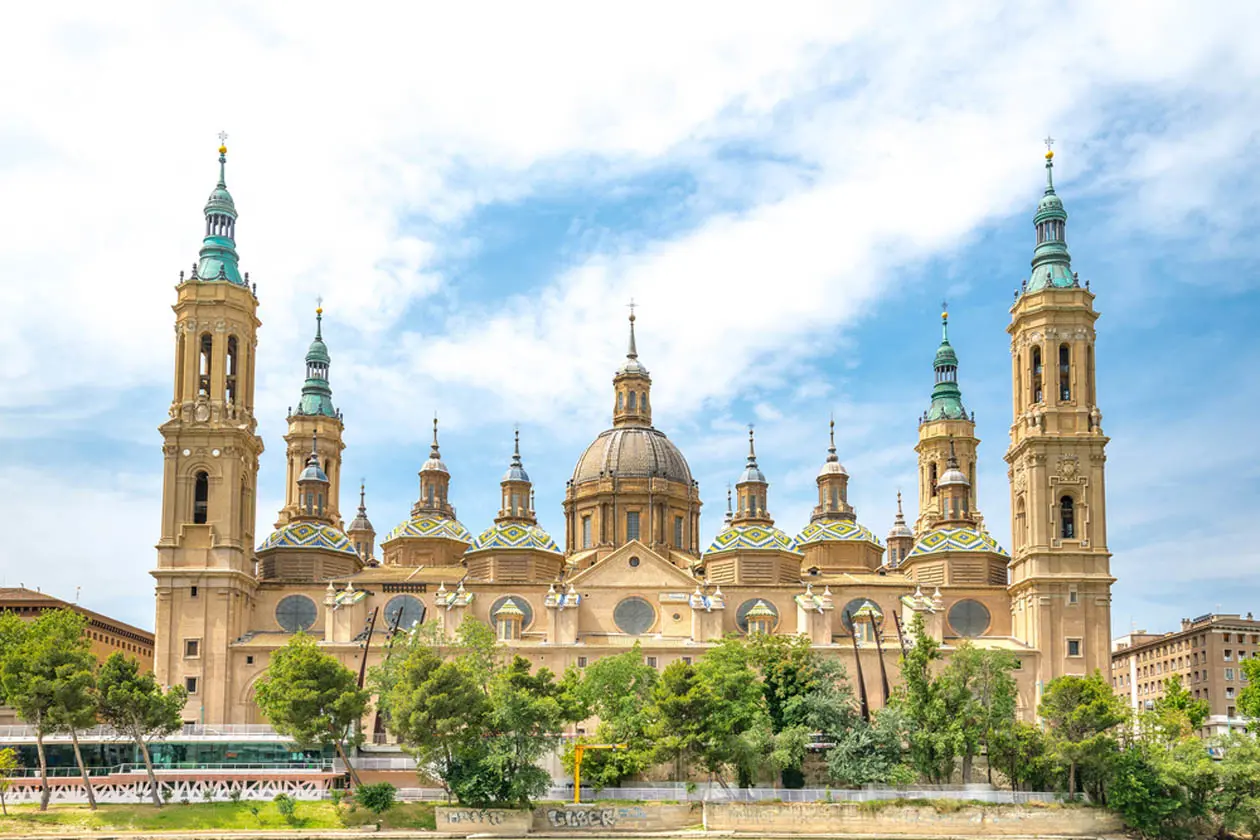
Basilica del Pilar Copyright © Sisterscom.com / Shutterstock
It is first arian shrine of Christianity and is visited every day by thousands of people. According to tradition it was built around the pillar brought by the Virgin after she appeared in Zaragoza on 2 January in 40 AD. Without doubt, del Pilar is a distinctive symbol of Zaragoza throughout the world. Alongside the Basilica, stand the Palace of La Lonja, a most important example of Renaissance architecture, and the Bridge of Stone. La Fiesta del Pilar in October is the largest popular festival, with a Crystal Rosary and a spectacular offering of flowers and fruit to the Virgin Mary.
Roman remains
Not to be missed are the Museum dedicated to Francisco Goya, who was born here, the Patio de la Infanta, the walk through the La Seo and del Pilar squares to the Torreón de la Zuda (tower of Zuda), built on the Roman walls and from which there is a marvellous view of the city, the Roman theatre and the forum of Caesar Augustus.
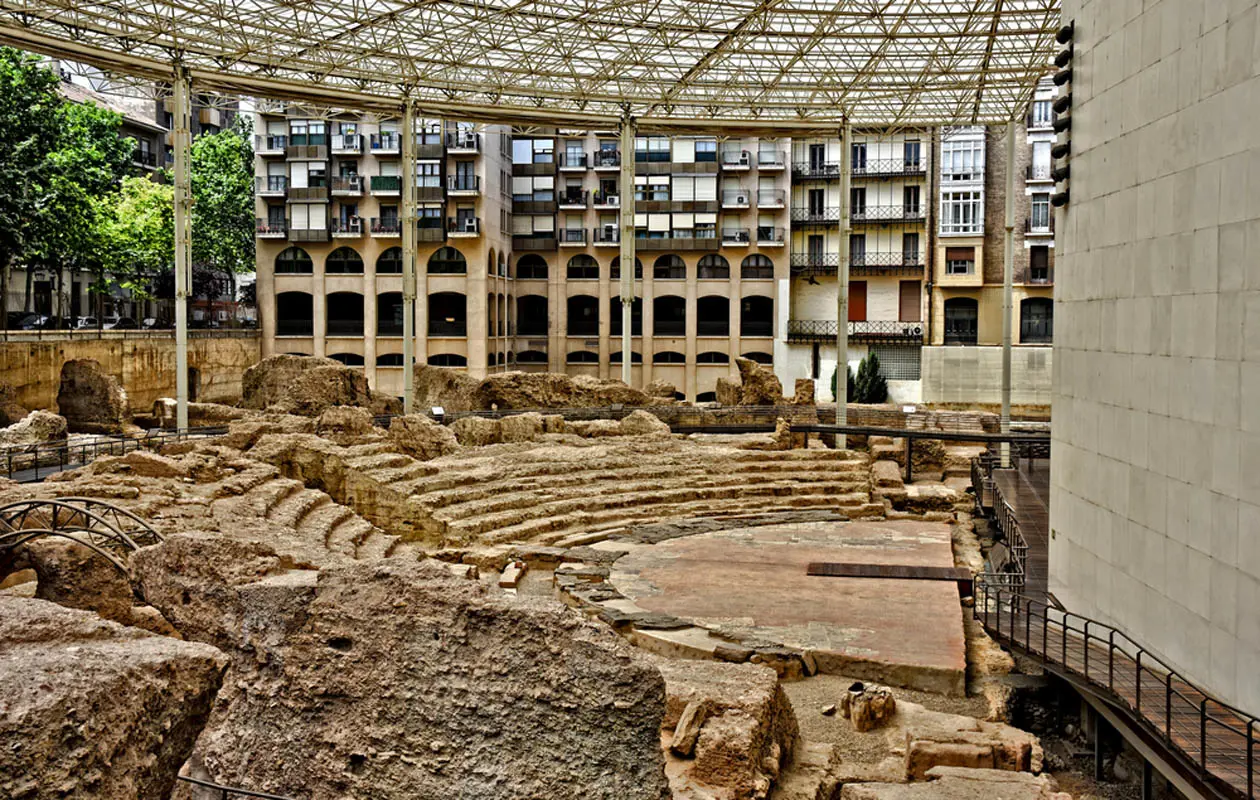
The Roman theatre Copyright © Sisterscom.com / Shutterstock
The tourist cannot avoid the charm of the Zaragoza night, which is a genuine spectacle and way of life. Even the small squares come alive and become meeting places, and it is easy to catch the fever of “tapear”, a passion that takes the visitor from one place to another in search of “tapas”, the gastronomic specialities found in small bars all over the city.
The typical dishes of Zaragoza
Typical aragon dishes are not processed, and are prepared with vegetables, fish, eggs, beef and dairy products. In Saragozza the dishes to try are: Bacalao al ajoarriero (with tomato and garlic), the Huevos en salmorejo (roasted eggs, sausage, fillet and broth), the Longaniza de Fuentes (pork with cinnamon) and the Lomo de cerdo (fried pork loin).
Text by Eugenio Sorrentino
Updated by Alisè Vitri
Avion Tourism Magazine
Photos: Sisterscom, Shutterstock
Copyright © Sisterscom.com - Reproduction prohibited
Photos: Sisterscom, Shutterstock
Copyright © Sisterscom.com - Reproduction prohibited
Video: www.spain.info
Tourism Board
www.zaragoza.es
www.spain.info
www.spain.info
Partnership con Booking.com
Where to sleep in Zaragoza

Photo:Copyright © Sisterscom.com / Shutterstock
Zaragoza is a welcoming city and offers different possibilities for accommodation.
To find the ideal hotel and the best offers you can do a search for the stars but also for districts or landmarks.
STARS
Hotels for stars, differentiated by type of services:
LANDMARKS
Hotels in tourist areas
AIRPORTS
Hotels near the airports
where to go in zaragoza
Monuments and Museums in Zaragoza

Copyright © Sisterscom.com / Shutterstock
ALJAFERIA PALACE
This is one of the most important monuments of 11th century Hispanic-Muslim architecture. Despite the numerous renovations that have been carried out on the building, we can still stroll through the beautiful porticos of the Santa Isabel courtyard as well as the Gilded Hall and the Oratory. The Mudéjar Palace of Pedro IV and the Saint Martin chapel are both outstanding buildings from the post-Renaissance period. Visit also the splendid 9th century Troubadour’s Tower was the setting chosen by Verdi for his famous opera “Il Troubadour”.

Copyright © Sisterscom.com / Shutterstock
PABLO SERRANO MUSEUM
The museum dedicated to Pablo Serrano lies in the Paseo María Agustín, on a site which formerly housed the workshops of the Provincial Orphanage. The museum displays a collection of works by the sculptor and his wife, painter Juan Francés, and is a key venue for the promotion of contemporary culture and creation.

Copyright © Sisterscom.com / Shutterstock
CATHEDRAL OF SAN SALVADOR OR LA SEO
It has been a Roman temple, Visigoth church, Mosque and finally a Cathedral, and thus showcases a range of contrasting artistic styles: Romanesque, Mudéjar, Renaissance, Gothic and Baroque. Also known as La Seo, particularly remarkable features include the Mudéjar wall of the parish, the Baroque tower and the Neoclassical façade. The main altarpiece, dedicated to El Salvador, is rendered in alabaster. The Chapter House houses the Tapestry Museum, an interesting tapestry collection spanning the 15th to the 18th centuries.

Copyright © Sisterscom.com / Shutterstock
WATER OF TOWER
The Water Tower stands 76 metres high and can be understood as a dual structure uniting the two separate elements that make up the building and give it its unique profile. The plinth is designed to overcome all the demands placed on the building by the terrain (differences in levels, slope, orientation for transit) and is 13 metres high on its most visible side. The transparent body, wrapped in glass with a sculptural form in the shape of a drop of water, is an iconic structure. This design allows the building to offer two faces that of an opaque building during the day and a great shiny beacon at night.
ZARAGOZA MUSEUM
This building was originally conceived by Ricardo Magdalena and Julio Bravo as an Arts Pavilion for the Hispanic-French exhibition of 1908. Located in the Plaza de Los Sitios, the museum is divided into two sections: Archaeology, with collections from prehistory up to the Muslim period, and Fine Art, with works from the 12th century up to the present day. A highlight is the exhibition dedicated to the painter Francisco de Goya.
PABLO GARGALLO MUSEUM
Situated in the Plaza San Felipe, this museum offers you two attractions in one: you can both contemplate the work of Pablo Gargallo, and discover the “Palacio de los Condes de Argillo”, a late Renaissance building from the 17th century. The significant works exhibited comprise sculptures, documents and drawings donated to Zaragoza City Council by the artist's daughter.
Excursions in Zaragoza

Copyright © Sisterscom.com / Shutterstock
WATER PARK LUIS BUNUEL
In Ranillas, next to the International Exhibition Complex, Water Park stretches. With an area of approximately 120 hectares, is a new concept of urban park that combines green areas, services and activities for all citizens.

Copyright © Sisterscom.com / Shutterstock
LLEIDA
It is about a 1 hour and 30 minute drive from Zaragoza. In the old part of the city, stands the ancient cathedral or Seu Vella, a Romanesque-Gothic temple built in the early 13th century. You can also admire the remains of the ancient walls and an Arab fortress of the ninth century. You can then stroll on the river or go shopping in Via Sant Antoni or Carrer Major.
Partnership with GetYourGuide
Discover all tours
News & Useful info
You might be interested in
Other destinations
Airports nearby Zaragoza






